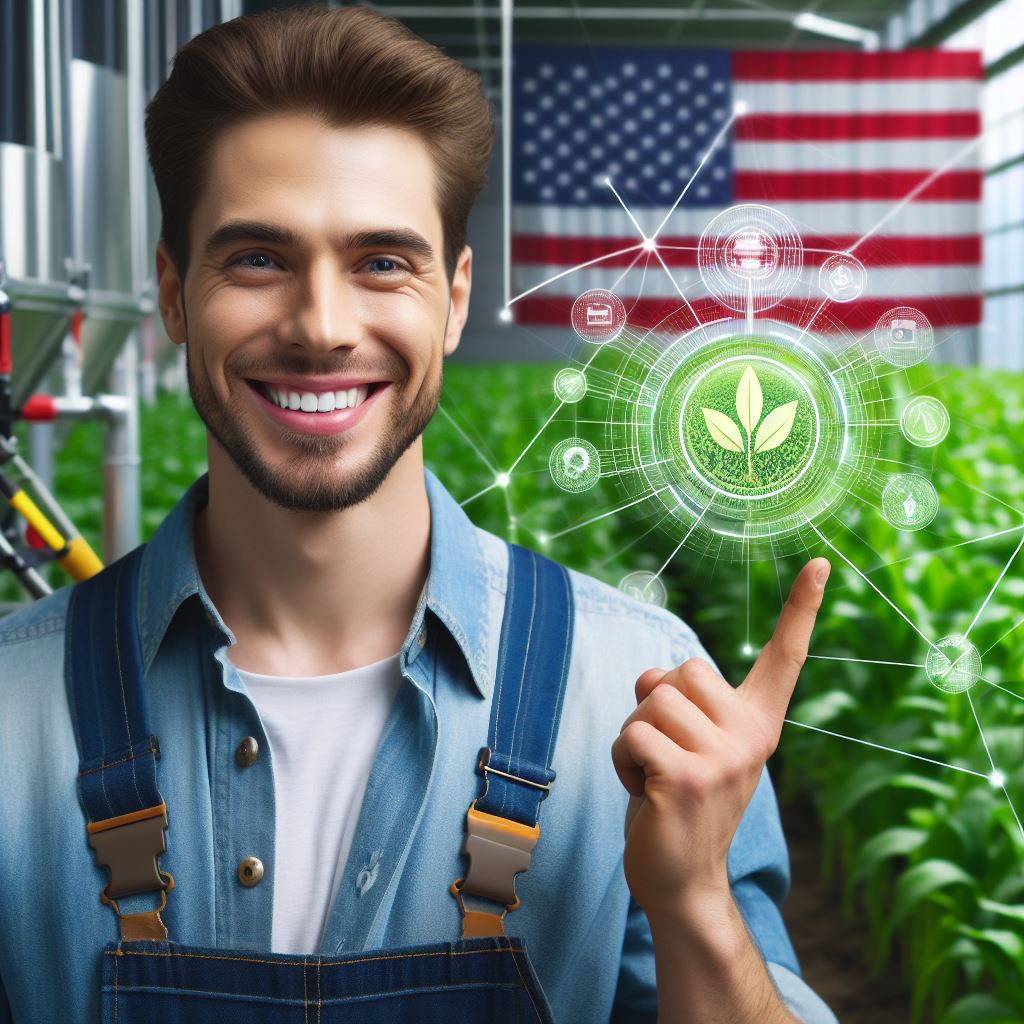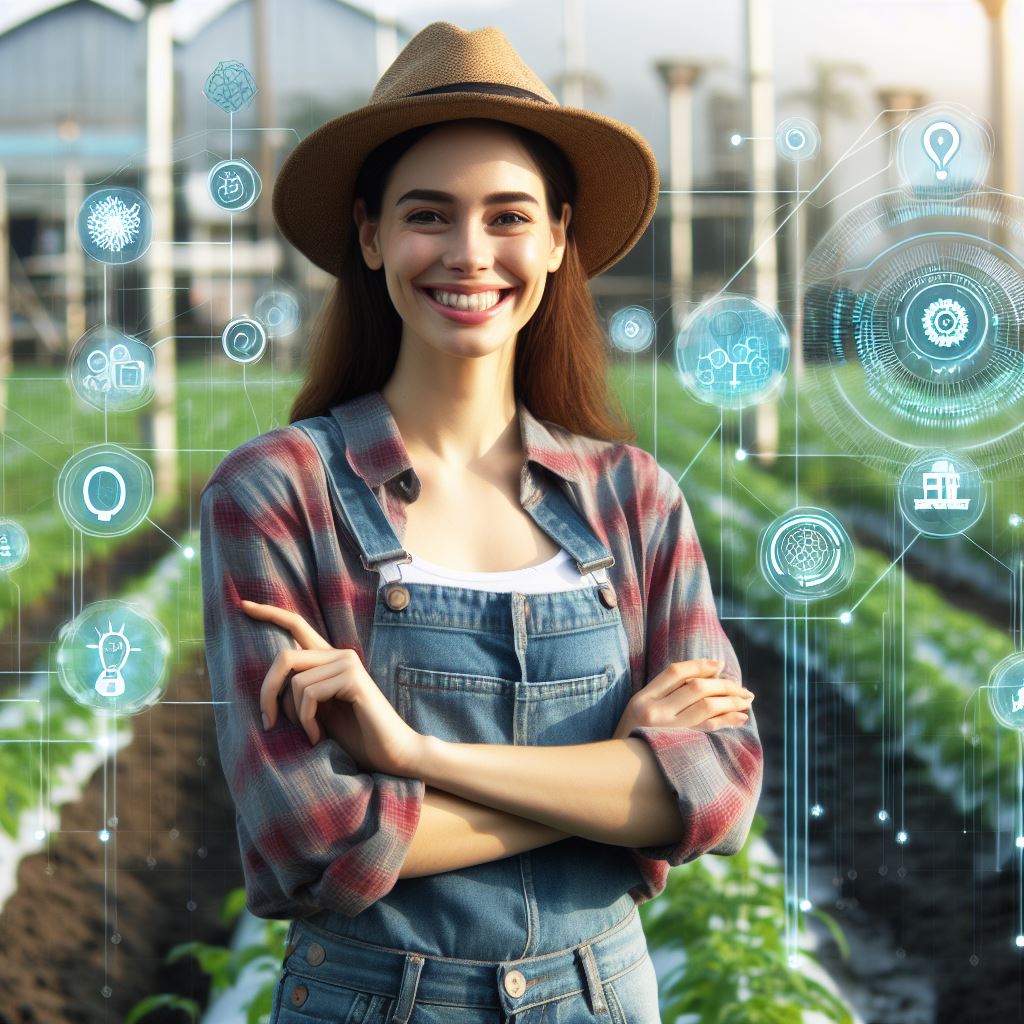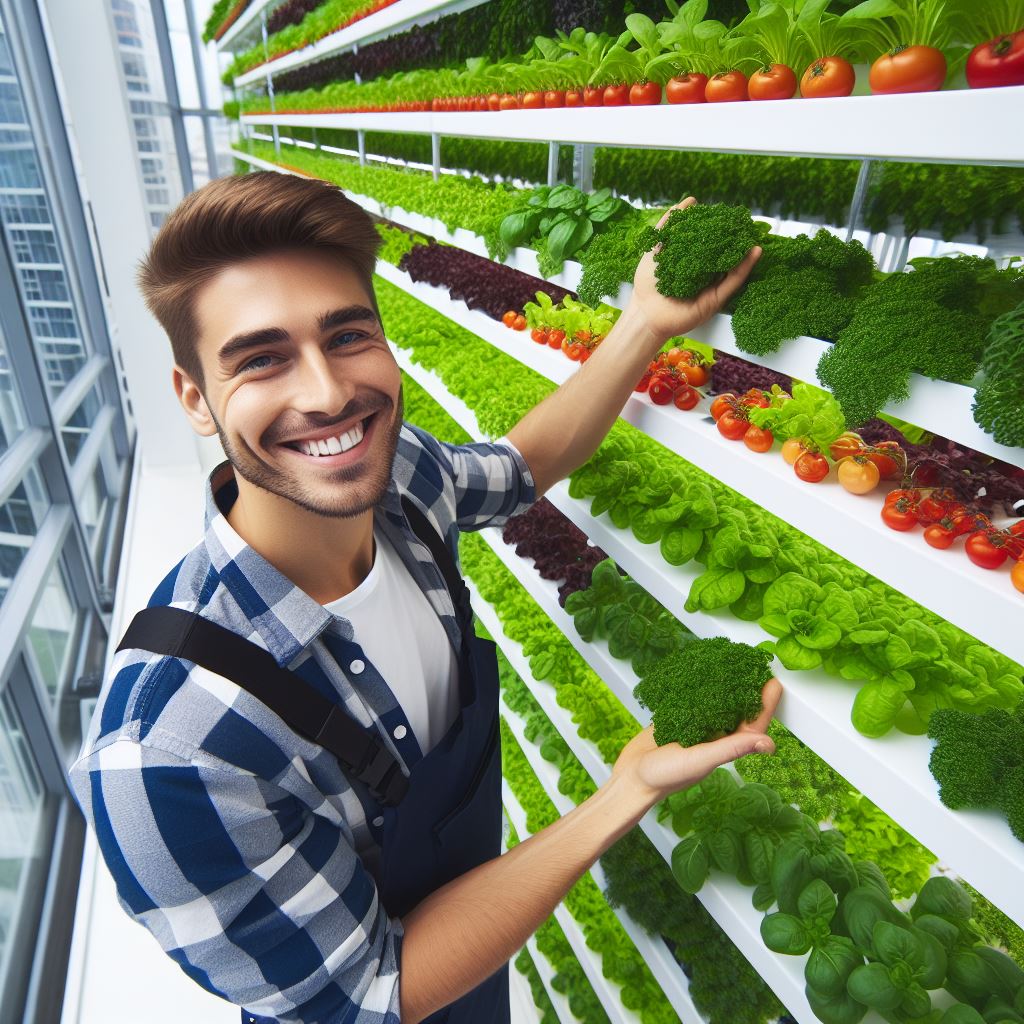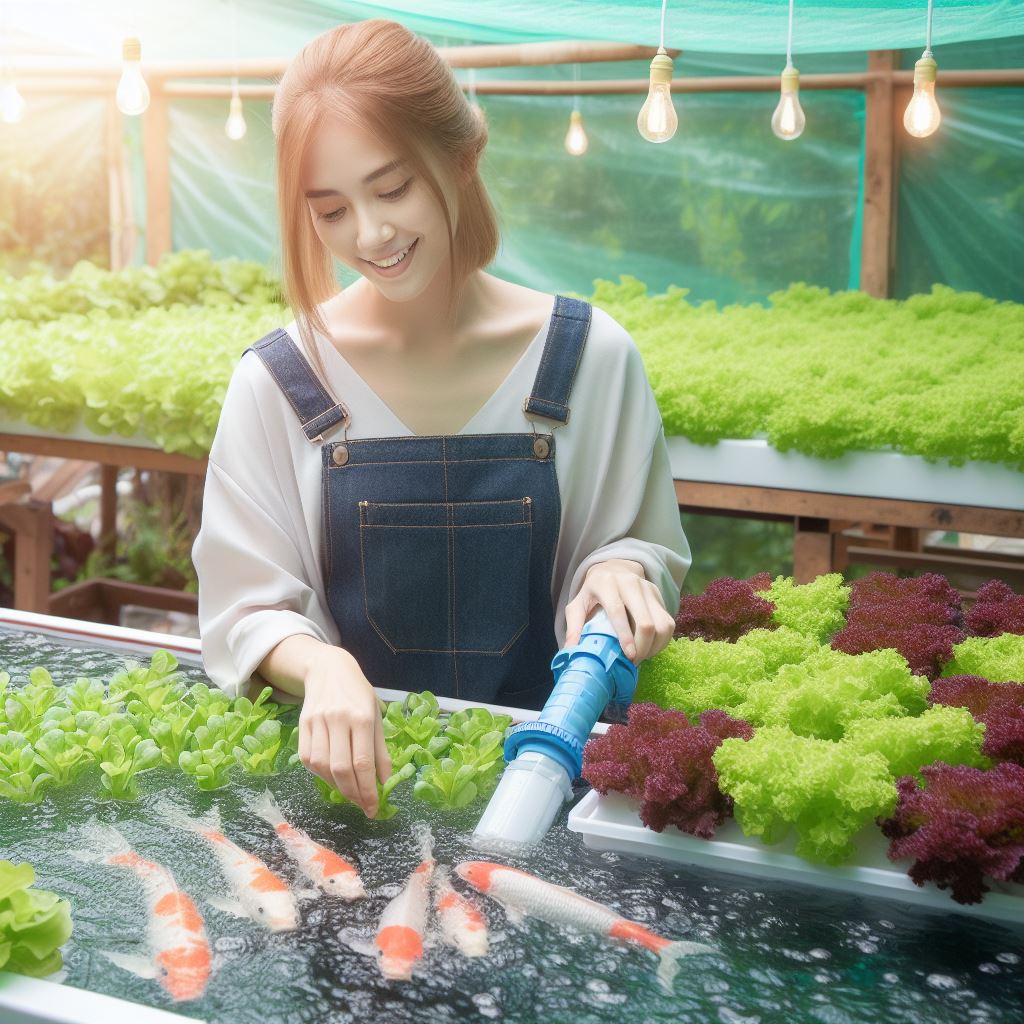Introduction
The use of IoT in agriculture involves the integration of technology to enhance farming practices.
It plays a vital role in improving efficiency, productivity, and sustainability in farming operations.
The concept of a connected farm empowers farmers with real-time data and control over their operations.
Definition of IoT in agriculture
IoT, or the Internet of Things, in agriculture refers to the network of interconnected devices that collect and exchange data in real-time, enabling efficient farm management.
Importance of IoT in improving farming practices
IoT offers numerous benefits to farmers such as optimized resource usage, early detection of diseases, remote monitoring, and data-driven decision making.
It enhances productivity, reduces costs, and minimizes environmental impact.
Brief overview of the connected farm concept
A connected farm is a digitally-enabled agricultural ecosystem that leverages IoT technology.
It uses sensors, drones, smart machinery, and software systems to collect and analyze data.
This data is used for precision farming, livestock management, irrigation control, and crop monitoring.
By implementing IoT solutions, farmers can gain actionable insights, automate tasks, improve crop yield, and enhance overall farm management.
The connected farm concept revolutionizes traditional farming practices, leading to increased productivity and sustainable agriculture.
In short, IoT in agriculture is transforming the way farmers operate their farms.
The integration of technology through a connected farm enables data-driven decision making, improves efficiency, and contributes to sustainable farming practices.
With the benefits it offers, it is evident that IoT will play a significant role in the future of agriculture.
Benefits of IoT in agriculture
IoT technology has been revolutionizing various industries, and agriculture is no exception.
The implementation of IoT in agriculture, also known as smart farming, has brought numerous benefits to farmers and the agricultural sector as a whole.
Enhanced efficiency and resource management
One of the key benefits of IoT in agriculture is the enhanced efficiency and resource management it offers.
Through real-time monitoring of environmental conditions, farmers can gain valuable insights into their crops and make informed decisions.
For example, IoT sensors can provide data on temperature, humidity, and soil moisture levels, allowing farmers to adjust their irrigation and fertilization practices accordingly.
Increased productivity and yields
IoT in agriculture also leads to increased productivity and yields.
By utilizing IoT devices and data analytics, farmers can optimize the use of resources and inputs.
This means they can reduce wastage and ensure that crops receive the right amount of water, nutrients, and pesticides.
Early detection and prevention of crop diseases are also made possible through IoT technologies, helping farmers protect their crops and achieve higher yields.
Additionally, data-driven decisions based on crop monitoring and analysis can improve crop quality.
Sustainability and environmental impact
Implementing IoT in agriculture promotes sustainability and reduces the environmental impact of farming practices.
By minimizing water, energy, and chemical waste, farmers can conserve valuable resources and reduce costs.
IoT can aid in water management by providing real-time data on soil moisture levels, enabling precise irrigation schedules.
Energy usage can also be optimized through IoT automation and smart devices.
Furthermore, by analyzing data gathered from IoT sensors, farmers can make informed decisions to reduce the use of harmful chemicals, contributing to a healthier environment.
Minimizing the carbon footprint is also achievable through IoT optimization of farming operations, reducing emissions from machinery and transportation.
In general, IoT in agriculture offers a wide range of benefits.
Enhanced efficiency and resource management enable farmers to make data-driven decisions and optimize their farming practices.
Increased productivity and yields are achieved through optimal resource utilization, early disease detection, and improved crop quality.
Sustaining the environment is also possible by reducing waste and minimizing the carbon footprint.
Overall, the adoption of IoT technology in agriculture brings significant advantages to farmers and contributes to the advancement of the agricultural sector.
Read: Precision Agriculture: My Farm’s Success Story
Components of a connected farm
A connected farm relies on various components to optimize agricultural practices and increase efficiency.
These components, including sensor technology, data analytics, and automation, play a significant role in revolutionizing the farming industry.
Sensor technology and data collection
One crucial aspect of a connected farm is the use of sensor technology for data collection.
Soil moisture sensors provide real-time information about the soil’s hydration levels, enabling farmers to irrigate their crops efficiently.
Weather sensors help predict weather patterns and make informed decisions regarding planting, harvesting, and pest control.
Livestock tracking devices monitor the health and location of animals, improving their welfare and preventing theft.
Data analytics and interpretation
Collected data is meaningless without proper analysis and interpretation.
Cloud-based platforms offer scalable and secure storage for vast amounts of agricultural data.
These platforms allow farmers to access their data from anywhere, facilitating informed decision-making.
Additionally, machine learning algorithms can process this data to provide predictive insights.
By analyzing historical and real-time data, farmers can optimize their practices, minimize risks, and enhance crop yields.
Transform Your Agribusiness
Unlock your farm's potential with expert advice tailored to your needs. Get actionable steps that drive real results.
Get StartedAutomation and control systems
Automation plays a vital role in a connected farm.
Automated irrigation systems reduce water usage by delivering water directly to plants based on real-time moisture sensor readings.
This ensures that crops receive optimal hydration, reducing waste and improving water resource management.
Robotic farm machinery, such as autonomous harvesters and weed control robots, streamline labor-intensive tasks, reducing manual labor costs and improving overall efficiency.
Remote monitoring and control systems allow farmers to track their operations from anywhere, ensuring timely responses to changing conditions.
The integration of these components into a connected farm has several benefits.
First and foremost, it increases productivity and efficiency.
By accurately assessing soil moisture and weather conditions, farmers can optimize irrigation schedules and pest control measures, leading to healthier crops and higher yields.
Machine learning algorithms can predict disease outbreaks or crop failures, allowing farmers to take preventive measures and minimize losses.
Automation reduces physical labor, allowing farmers to allocate their resources more effectively.
Moreover, a connected farm promotes sustainability.
By using sensor technology and automation, farmers can optimize resource usage, leading to reduced water consumption, minimized pesticide application, and lower environmental impact.
Precision agriculture techniques, facilitated by data analytics, enable farmers to target specific areas needing treatment, reducing chemical usage and preserving biodiversity.
In fact, a connected farm relies on sensor technology, data analytics, and automation to revolutionize agricultural practices.
By collecting real-time data, analyzing it with advanced algorithms, and automating tasks, farmers can optimize productivity, minimize risks, and promote sustainability.
As technology continues to advance, the potential for a connected farm to transform the farming industry is immense.
Read: Family Farming: Balancing Tradition, Change

Application of IoT in specific agricultural domains
In addition to the general benefits of IoT in agriculture, specific applications of this technology can revolutionize different agricultural domains.
These applications include crop farming, livestock farming, and aquaculture.
Crop farming
Crop farming is an essential aspect of agriculture, and IoT can greatly enhance its efficiency.
By monitoring and optimizing nutrient levels, farmers can ensure that plants receive the necessary nutrition for healthy growth.
This information can be gathered through sensors placed in the soil and transmitted to a centralized platform for analysis and decision-making.
Disease and pest detection and prevention are crucial for maintaining crop health.
IoT devices can monitor the presence of pests and diseases by using sensors to detect changes in temperature, humidity, or even the behavior of insects.
Real-time data can help farmers take immediate action, implementing targeted treatments or adjusting environmental conditions to control infestations.
Another application of IoT in crop farming is yield prediction and optimization.
By collecting data on climate conditions, soil moisture levels, and plant health, farmers can use predictive analytics to estimate and optimize their yields.
This information enables more efficient resource allocation and helps farmers make better-informed decisions regarding irrigation, fertilization, and crop protection.
Livestock farming
Livestock farming also benefits from IoT technologies.
Tracking animal health and behavior is made easier through wearable devices that monitor vital signs, activity levels, and even location data.
This real-time information allows farmers to quickly identify health issues, monitor breeding patterns, and provide early intervention if necessary.
Automated feeding and monitoring systems streamline livestock farming operations.
IoT-enabled feeders can dispense precise amounts of feed at specific times, ensuring optimal nutrition for each animal.
Monitoring systems can track feed consumption, providing valuable insights into individual animal performance and overall herd health.
Aquaculture, the farming of aquatic organisms like fish and shellfish, is another domain where IoT is gaining traction.
Water quality monitoring and control are crucial for the success of aquaculture operations.
IoT sensors can continuously measure factors such as dissolved oxygen levels, pH, and temperature, alerting farmers to any potential issues and allowing for immediate corrective actions.
Feeding and growth optimization in aquaculture can also be enhanced through IoT.
Automated feeding systems can dispense the right amount of food based on the specific requirements of different species and growth stages.
Sensors can monitor fish behavior and feed intake, helping farmers adjust feeding schedules and quantities to maximize growth while minimizing waste.
In review, IoT has significant applications in specific agricultural domains such as crop farming, livestock farming, and aquaculture.
By leveraging IoT technologies, farmers can optimize nutrient levels, detect and prevent diseases and pests, predict and optimize yields, track animal health and behavior, automate feeding and monitoring systems, and monitor and control water quality in aquaculture.
These advancements in IoT improve the efficiency, productivity, and sustainability of agricultural practices, contributing to global food security.
Read: Young Farmers, Big Dreams: Their Stories
Challenges and limitations of IoT in agriculture
The implementation of IoT in agriculture brings numerous benefits, but it is not free from challenges and limitations.
Here are some of the key challenges that need to be addressed for successful adoption of IoT in the agricultural sector:
Initial investment costs and affordability
One of the major challenges faced by farmers when considering IoT implementation in agriculture is the high initial investment costs.
The cost of IoT devices, sensors, and connectivity infrastructure can be substantial, particularly for small-scale farmers with limited resources.
This financial burden may deter farmers from embracing IoT technology.
Connectivity and network coverage issues in remote areas
Agriculture often takes place in remote areas with limited internet connectivity.
This lack of network coverage poses a challenge to implementing IoT solutions effectively.
Without a reliable connection, the data collected by IoT devices cannot be transmitted in real-time, hampering the effectiveness of the technology in improving agricultural practices.
Data privacy and security concerns
With the increasing reliance on IoT devices, data privacy and security become significant concerns.
Farmers need to ensure that their data, which includes sensitive information about their operations, remains secure and protected from unauthorized access.
Cyberattacks targeting IoT systems can lead to serious consequences and compromise the integrity of agricultural operations.
Integration and interoperability between different IoT devices and platforms
The interoperability of different IoT devices and platforms is a challenge that needs to be addressed for the seamless integration of IoT in agriculture.
Each device and platform may use different communication protocols, making it difficult to connect and exchange information.
Lack of compatibility and standardization can hinder the full potential of IoT technology in agriculture.
In essence, while IoT has the potential to revolutionize agriculture, there are challenges and limitations that must be addressed.
The initial investment costs, connectivity issues, data privacy and security concerns, as well as interoperability between devices, need to be overcome for successful implementation of IoT in agriculture.
With proper solutions in place, IoT can transform farming and contribute to sustainable and efficient agricultural practices.
Read: High-Tech Farming: A New Age Challenge
Future trends and developments in IoT for agriculture
The future of IoT in agriculture looks promising, with several trends and developments on the horizon.
Advancements in sensor technology for better data collection
Sensor technology continues to evolve, leading to the development of more advanced and accurate sensors for agriculture.
These sensors can collect data on soil moisture, temperature, humidity, and nutrient levels, providing farmers with real-time information to make informed decisions.
Showcase Your Farming Business
Publish your professional farming services profile on our blog for a one-time fee of $200 and reach a dedicated audience of farmers and agribusiness owners.
Publish Your ProfileIntegration of IoT with drones for aerial monitoring
Drones equipped with IoT sensors and cameras can be used for aerial monitoring of crops and livestock.
They can capture high-resolution images and collect data on crop health, identify pests or diseases, and monitor irrigation systems.
Integration of drones with IoT enables farmers to have a bird’s eye view of their farm and make data-driven decisions.
Adoption of blockchain technology for data transparency and security
Blockchain technology can revolutionize data management in agriculture by providing transparency and security.
Farmers can securely store and share data related to crop yields, weather conditions, and supply chain information with other stakeholders.
Blockchain ensures data integrity and eliminates the risk of tampering, enhancing trust among farmers, suppliers, and consumers.
Expansion of IoT applications in urban farming and vertical agriculture
As urbanization increases, there is a growing need for sustainable food production within cities.
IoT can play a crucial role in urban farming and vertical agriculture.
Smart sensors, automated systems, and IoT-enabled devices can optimize resource utilization, monitor plant growth, and control environmental conditions in urban farming setups.
This expansion of IoT applications will enable cities to become more self-sufficient in food production.
In a nutshell, the future of IoT in agriculture holds great potential for transforming the industry.
Advancements in sensor technology, integration of IoT with drones, adoption of blockchain technology, and the expansion of IoT applications in urban farming are some of the key trends and developments to watch out for.
These advancements will help farmers improve productivity, reduce costs, and address the challenges of feeding a growing population in a sustainable manner.
Conclusion
Recap of the benefits and potential of IoT in agriculture
IoT in agriculture offers numerous benefits such as increased productivity, improved resource management, and higher crop yields.
It has the potential to revolutionize the farming industry by making it more efficient and sustainable.
Call to action for farmers to explore IoT solutions for their farms
It is essential for farmers to embrace IoT technology and explore its potential for their farms.
By implementing IoT solutions, farmers can optimize their operations, reduce costs, and ensure the profitability and sustainability of their businesses.
Closing thoughts on the transformational impact of IoT on the future of farming
The transformational impact of IoT on the future of farming cannot be underestimated.
With IoT, farming will become more data-driven and connected, enabling farmers to make informed decisions, improve crop quality, and address the challenges of food security and climate change.
Embracing IoT is crucial for the continued growth and development of the agricultural industry.




